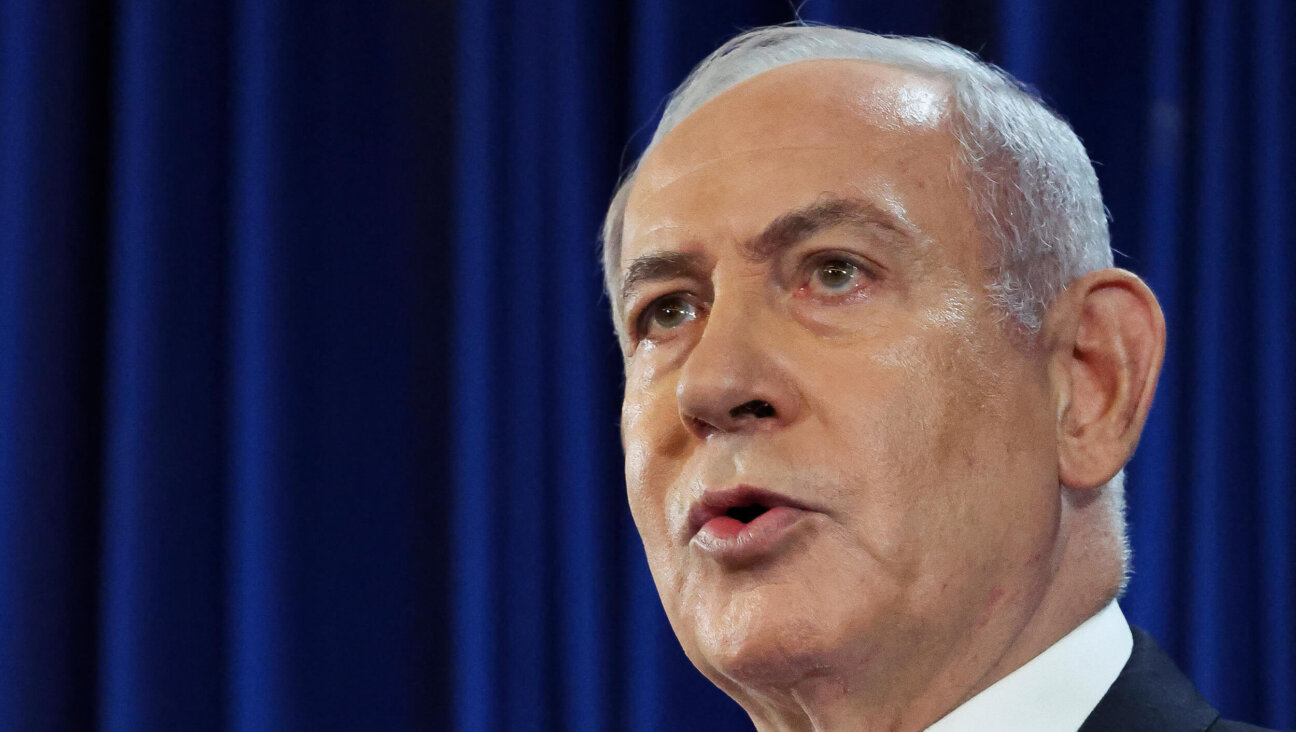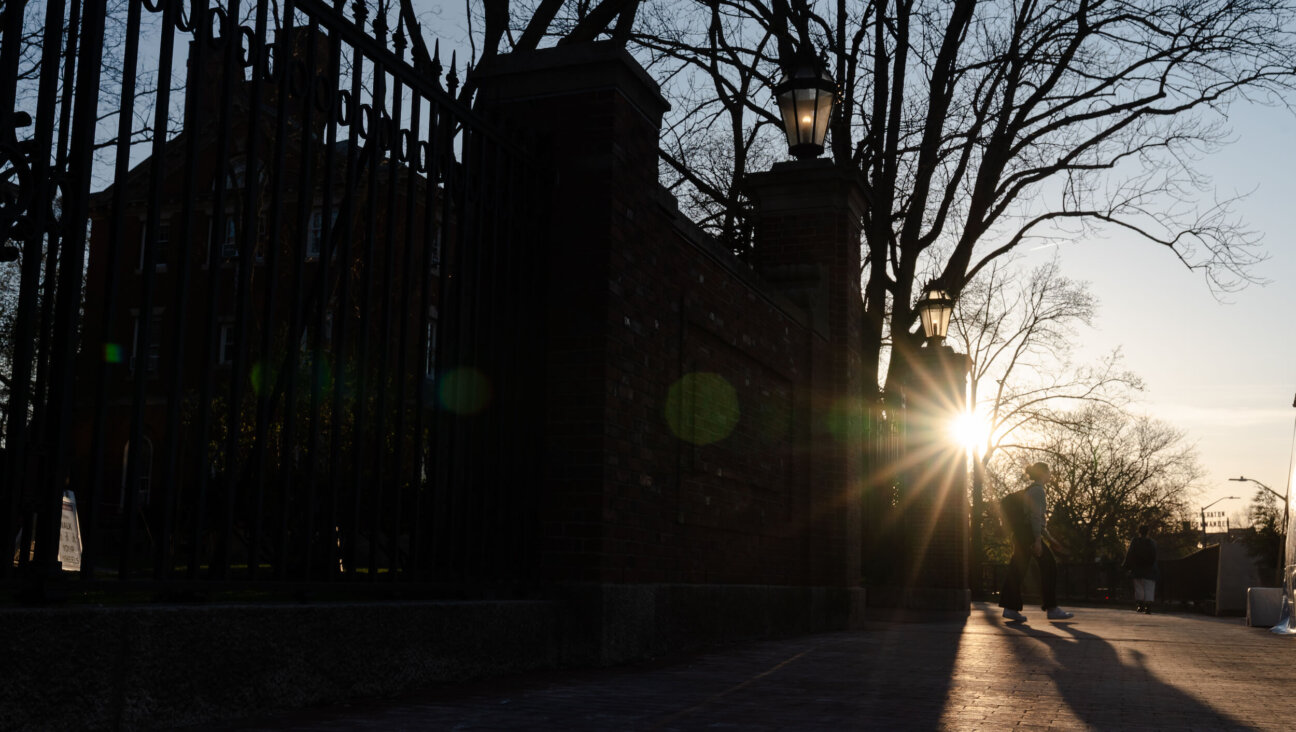‘Continuity Crisis’ to Activist Opportunity
When the results from the 1990 National Jewish Population Survey were released, one figure made headlines: 52%.
That number purportedly represented the intermarriage rate among Jews who were married between 1985 and 1990. It was by no means the first indication that intermarriage was increasingly common, but it signaled the first time that a majority of American Jews were not marrying other Jews. The years that followed saw a significant shift in communal resources to address what was dubbed the “continuity crisis.”
In November of this past year, Jews were surveyed once again, this time as they left their polling places on Election Day. Now we have a new figure: 78%. That is the proportion of American Jews who voted for Barack Obama, defying many predictions.
Just as the 1990 NJPS helped to galvanize Jewish concern about intermarriage, the level of enthusiasm among Jews for President Obama will similarly galvanize concern around issues of social change and justice.
Elections, like surveys, can be clarifying. But they rarely tell us something that close observers didn’t already know. Just as intermarriage was a concern (and a reality) before the 1990 NJPS, American Jews have long been at the forefront of social justice movements.
Yet in recent decades the widespread embrace of social causes by American Jews had been lost on many of our institutions. The question now is how will our Jewish institutions relate to the Jews of Generation Obama? The choice is clear: Build a community that reflects the passions and priorities of the majority of Jews, or watch the gap between Jewish institutions and individual Jews grow ever wider.
Some recent developments suggest that our community is making the right choice. For example:
• Several leading Jewish foundations, including the Charles and Lynn Schusterman Foundation and the Jim Joseph Foundation, recently provided more than $18 million in seed funding for a new Jewish organization, Repair the World. This nonprofit aims to “make service a defining element of American Jewish life, learning, and leadership.”
• San Francisco’s Jewish Community Federation hired as its CEO Daniel Sokatch, the founding director of the California-based Progressive Jewish Alliance. This marked the first time that the leader of a local Jewish social-change group had been tapped to run a Jewish federation.
• BBYO, the country’s leading interdenominational Jewish youth movement, is making service the cornerstone of its programming. In the fall BBYO will complete a merger with Panim, an organization that promotes Jewish leadership and values through a range of programs.
• The Conservative movement has taken a leading role in the highest-profile struggle over issues of social justice within the Jewish community. The scandal over working conditions at the Agriprocessors kosher slaughterhouse mobilized a broad coalition of Jewish groups. And it helped spur the Conservative movement to create a new ethical certification for kosher foods and to adopt a stronger position in support of workers’ rights.
The embrace of Jewish social-change organizations and leaders by their more traditional counterparts comes at a time of great opportunity for our community.
Since the attacks of 9/11, young Americans have been hungry for opportunities to serve. Jews have embraced service with particular zeal. Many are looking for direction and resources, and the Jewish community has an opportunity to provide these.
The election of President Obama, meanwhile, has empowered a new coterie of Jewish leaders, both inside and outside his administration. These new influentials tend to share the president’s passion for social change. Indeed, it is no coincidence that this year, the machers behind Newsweek’s annual list of America’s most influential rabbis gave the top spot to Rabbi David Saperstein, the highest-profile social justice leader working in the Jewish community today. (Saperstein was also chosen to give the opening invocation at the 2008 Democratic National Convention before Obama’s acceptance speech.)
Finally, the severe recession already has begun to force a rethinking of communal priorities and the ways in which our institutions are structured. New fundraising models, of the sort that fueled the effort to elect Obama, will encourage institutions to reach out to wider audiences and collaborate more with their constituents in shaping their agendas. Our communal institutions will succeed if they listen to the voices of the masses of Jews who prioritize engagement around issues of justice.
Despite its financial losses this past year, the Jewish community is well positioned to play an important role in the public square, addressing the pressing issues of the day. Jews, like many other Americans, want to be a part of the solutions to challenges that have long felt intractable. We want to reverse climate change and end poverty for working Americans. As the Obama administration and Congress tackle these and other issues, the Jewish community should be helping shape efforts to bring change.
I believe that if the Jewish community had taken all the resources — financial and otherwise — that we put into continuity programming after the 1990 NJPS and instead invested them in addressing even one of the challenges most pressing to those most in need, we would have no problem attracting Jews to our institutions. It is heartening that we now appear ready to give this proposition a try.
Simon Greer is president and CEO of Jewish Funds for Justice.
The Forward is free to read, but it isn’t free to produce

I hope you appreciated this article. Before you go, I’d like to ask you to please support the Forward.
Now more than ever, American Jews need independent news they can trust, with reporting driven by truth, not ideology. We serve you, not any ideological agenda.
At a time when other newsrooms are closing or cutting back, the Forward has removed its paywall and invested additional resources to report on the ground from Israel and around the U.S. on the impact of the war, rising antisemitism and polarized discourse.
This is a great time to support independent Jewish journalism you rely on. Make a Passover gift today!
— Rachel Fishman Feddersen, Publisher and CEO
Most Popular
- 1

News Student protesters being deported are not ‘martyrs and heroes,’ says former antisemitism envoy
- 2

News Who is Alan Garber, the Jewish Harvard president who stood up to Trump over antisemitism?
- 3

Fast Forward Suspected arsonist intended to beat Gov. Josh Shapiro with a sledgehammer, investigators say
- 4

Opinion What Jewish university presidents say: Trump is exploiting campus antisemitism, not fighting it
In Case You Missed It
-

Culture In Pope Francis, a voice for interfaith dialogue and against antisemitism
-

Fast Forward Israeli army fires deputy commander after finding ‘operational errors’ in killing of 15 Gazans
-

News Pope Francis, who advanced church’s relationships with Jews, dies at 88
-

Fast Forward ‘F–k Israel’ message displayed at Coachella music festival and streamed to millions
-
Shop the Forward Store
100% of profits support our journalism
Republish This Story
Please read before republishing
We’re happy to make this story available to republish for free, unless it originated with JTA, Haaretz or another publication (as indicated on the article) and as long as you follow our guidelines.
You must comply with the following:
- Credit the Forward
- Retain our pixel
- Preserve our canonical link in Google search
- Add a noindex tag in Google search
See our full guidelines for more information, and this guide for detail about canonical URLs.
To republish, copy the HTML by clicking on the yellow button to the right; it includes our tracking pixel, all paragraph styles and hyperlinks, the author byline and credit to the Forward. It does not include images; to avoid copyright violations, you must add them manually, following our guidelines. Please email us at [email protected], subject line “republish,” with any questions or to let us know what stories you’re picking up.

















